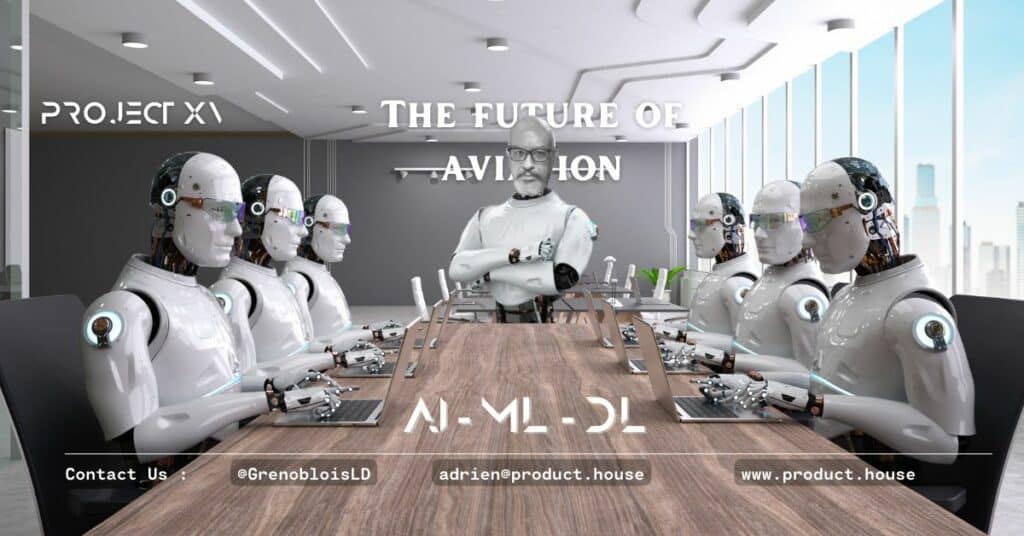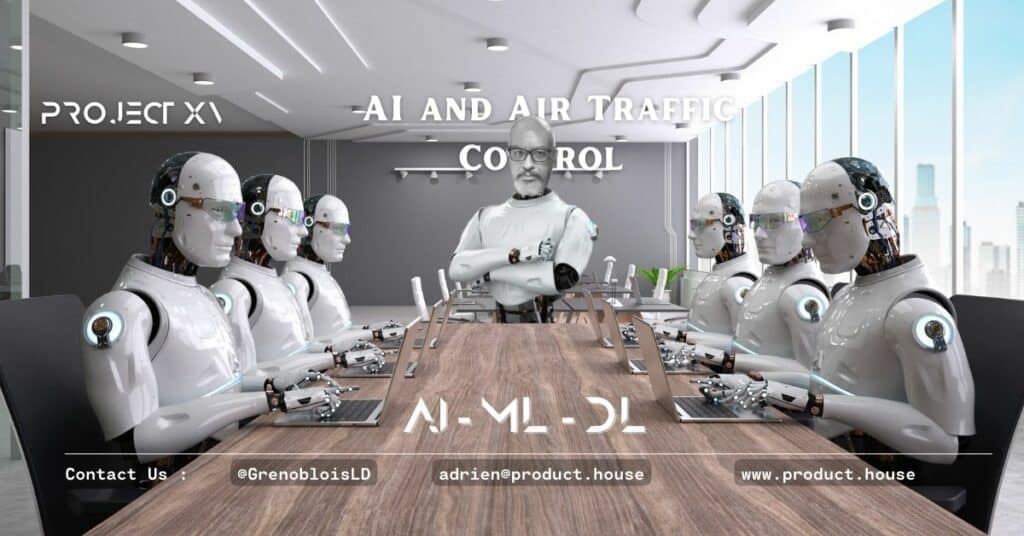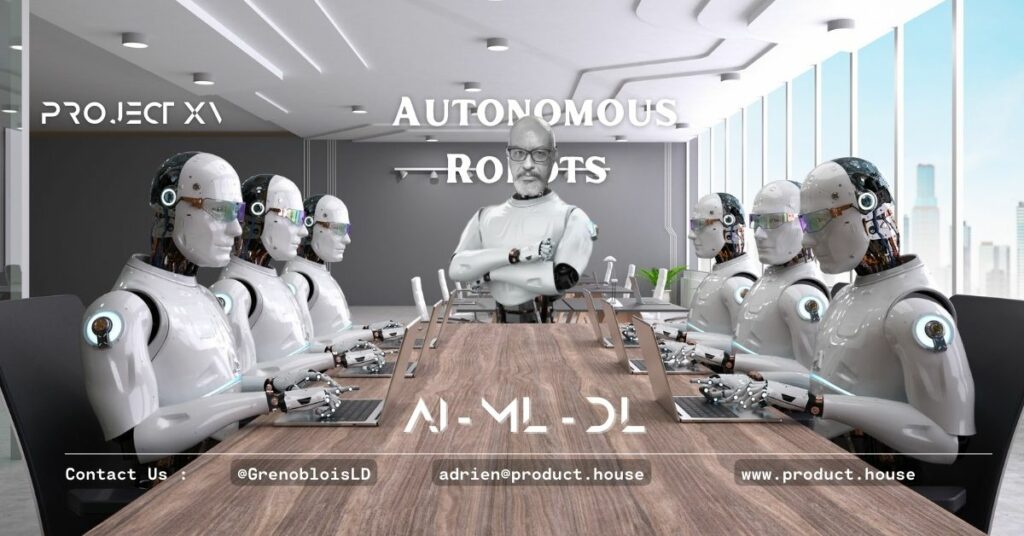The Future of Aviation: How AI Is Changing the Aerospace Industry

The aerospace industry has always been at the forefront of technological innovation, and the integration of artificial intelligence (AI) is no exception. From improving safety and efficiency to reducing costs and enhancing the passenger experience, AI is revolutionizing the aviation industry. In this article, we’ll explore the impact of AI on aviation and what the future of the aerospace industry may look like.
I. What is AI, and how is it being used in aviation?
- AI is the ability of a machine or computer program to learn and perform tasks that typically require human intelligence. In aviation, AI is being used for a wide range of applications, including aircraft design and optimization, predictive maintenance, air traffic control, and passenger experience.
II. How is AI improving safety in aviation?
- AI is being used to improve safety in aviation by analyzing large amounts of data and identifying potential safety risks before they become a problem. For example, AI can analyze data from sensors and other sources to detect and predict equipment failures, allowing maintenance crews to take preventive action before an issue arises.
III. What are some examples of AI being used to optimize aircraft design?
- AI is being used to optimize aircraft design by analyzing vast amounts of data and simulating different design options to find the most efficient and effective solutions. For example, AI can analyze data from wind tunnels, flight tests, and other sources to optimize the shape and materials of aircraft components for maximum performance and efficiency.
IV. How is AI enhancing the passenger experience in aviation?
- AI is enhancing the passenger experience in aviation by providing personalized services and recommendations based on passenger preferences and behavior. For example, AI can analyze passenger data to provide personalized meal options, in-flight entertainment, and even seat preferences based on previous travel history.
V. What is the potential impact of AI on the future of aviation?
- The integration of AI into aviation has the potential to significantly impact the industry, from improving safety and efficiency to enhancing the passenger experience and reducing costs. Some experts even predict that AI may eventually lead to fully autonomous aircraft, reducing the need for human pilots.
List of Resources:
- “Artificial Intelligence in Aerospace,” Aerospace Industries Association, 2019. This report provides an overview of the current state of AI in the aerospace industry and its potential applications.
- “Artificial Intelligence and Aerospace Engineering,” by Vishnu Kumar, International Journal of Emerging Technology and Advanced Engineering, 2015. This paper explores the potential applications of AI in aerospace engineering and design.
- “Artificial Intelligence in Aviation,” by Rob Mark, Flying Magazine, 2019. This article provides an overview of the impact of AI on the aviation industry.
List of Books:
- “Artificial Intelligence and Aerospace Engineering,” edited by Michael G. Hinchey et al. This book provides an in-depth exploration of the potential applications of AI in aerospace engineering and design.
- “Aircraft Design Optimization with Machine Learning and Genetic Algorithm,” by Xiaochen Han. This book explores the use of machine learning and genetic algorithms in aircraft design optimization.
- “Artificial Intelligence and Robotics in Manufacturing,” by Sabina Jeschke et al. This book provides an overview of the use of AI and robotics in manufacturing and its potential applications in the aerospace industry.
List of Relevant Experts:
- Dr. Elaine Oran, professor and researcher at the University of Maryland and expert in computational fluid dynamics and combustion.
- Dr. Andrew Rae, lecturer in flight dynamics and aerospace propulsion at the University of the Highlands and Islands and expert in drone technology and autonomous flight systems.
- Dr. Sarah Fletcher, senior lecturer in aeronautics at Imperial College London and expert in aircraft design and optimization.
Examples of Use:
- GE Aviation uses AI to optimize engine performance and predict maintenance needs, reducing costs and increasing efficiency.
- Airbus is using AI to analyze passenger data and provide personalized recommendations for in-flight services.
- NASA is developing an AI-powered air traffic control system that can manage traffic in real-time and optimize routes for increased efficiency.
Glossary of Technical Terms:
- Artificial Intelligence (AI): The ability of a machine or computer program to learn and perform tasks that typically require human intelligence, such as recognizing patterns, understanding natural language, and making decisions.
- Predictive Maintenance: The use of data analysis and machine learning to predict when maintenance is needed on equipment or machinery, allowing for proactive repairs and reducing downtime and costs.
- Autonomous Flight: The ability of an aircraft to operate and make decisions without human input or intervention.
- Computational Fluid Dynamics: The use of mathematical modeling and numerical methods to simulate fluid flows and their effects on aircraft and other objects.
- Combustion: The process of burning fuel to produce energy or heat, typically used in engines and power generation.
- Machine Learning: A subset of AI that involves the use of algorithms and statistical models to enable computers to learn from data and make predictions or decisions without being explicitly programmed.
FAQs
- What is AI, and how is it being used in aviation?
AI is the ability of a machine or computer program to learn and perform tasks that typically require human intelligence. In aviation, AI is being used for a wide range of applications, including aircraft design and optimization, predictive maintenance, air traffic control, and passenger experience. - How is AI improving safety in aviation?
AI is being used to improve safety in aviation by analyzing large amounts of data and identifying potential safety risks before they become a problem. For example, AI can analyze data from sensors and other sources to detect and predict equipment failures, allowing maintenance crews to take preventive action before an issue arises. - What are some examples of AI being used to optimize aircraft design?
AI is being used to optimize aircraft design by analyzing vast amounts of data and simulating different design options to find the most efficient and effective solutions. For example, AI can analyze data from wind tunnels, flight tests, and other sources to optimize the shape and materials of aircraft components for maximum performance and efficiency. - How is AI enhancing the passenger experience in aviation?
AI is enhancing the passenger experience in aviation by providing personalized services and recommendations based on passenger preferences and behavior. For example, AI can analyze passenger data to provide personalized meal options, in-flight entertainment, and even seat preferences based on previous travel history. - What is the potential impact of AI on the future of aviation?
The integration of AI into aviation has the potential to significantly impact the industry, from improving safety and efficiency to enhancing the passenger experience and reducing costs. Some experts even predict that AI may eventually lead to fully autonomous aircraft, reducing the need for human pilots. - How is AI being used for air traffic control?
AI is being used for air traffic control by analyzing real-time data from radar and other sources to optimize flight paths, reduce delays, and enhance safety. For example, AI can predict potential conflicts between aircraft and provide alternative routes or speeds to prevent collisions. - How is AI being used for predictive maintenance in aviation?
AI is being used for predictive maintenance in aviation by analyzing data from sensors and other sources to predict when maintenance is needed on equipment or machinery. This allows for proactive repairs and reduces downtime and costs. - What are some challenges associated with using AI in aviation?
Challenges associated with using AI in aviation include ensuring data accuracy and quality, addressing concerns around safety and ethics, and ensuring compatibility with existing systems and regulations. - What are some examples of companies using AI in the aerospace industry?
Companies using AI in the aerospace industry include GE Aviation, Airbus, Boeing, and NASA. - What is the role of experts in the integration of AI in aviation?
Experts in fields such as aerospace engineering, computer science, and data analysis play a crucial role in the integration of AI in aviation by developing and implementing AI systems, ensuring their safety and effectiveness, and addressing ethical and regulatory concerns.
Quiz Questions
- What is AI, and how is it being used in aviation?
- How is AI improving safety in aviation?
- What are some examples of AI being used to optimize aircraft design?
- How is AI enhancing the passenger experience in aviation?
- What is the potential impact of AI on the future of aviation?
- How is AI being used for air traffic control?
- How is AI being used for predictive maintenance in aviation?
- What are some challenges associated with using AI in aviation?
- What are some examples of companies using AI in the aerospace industry?
- What is the role of experts in the integration of AI in aviation?





